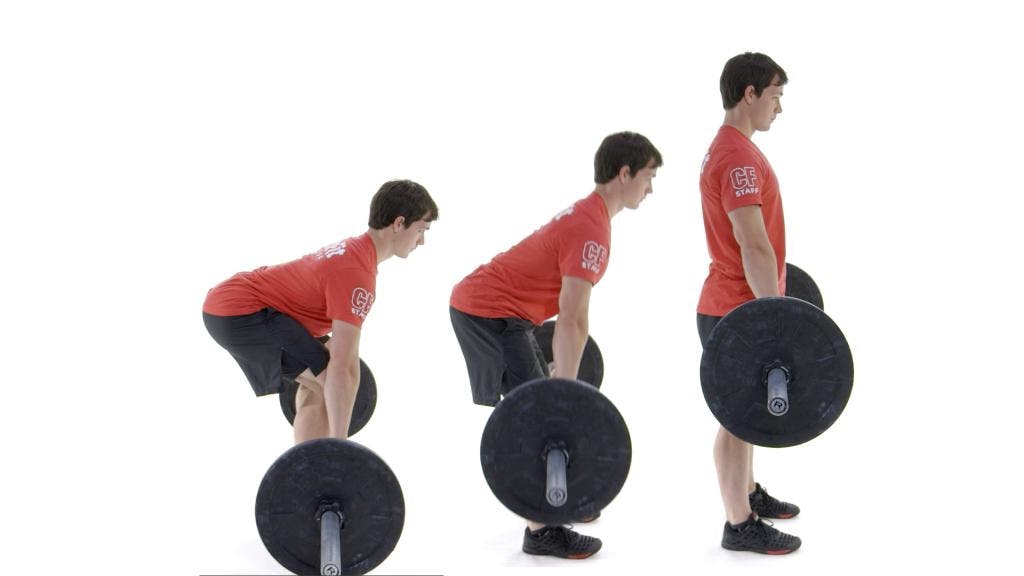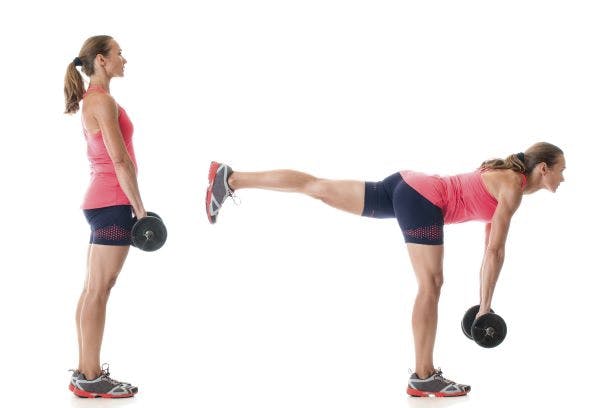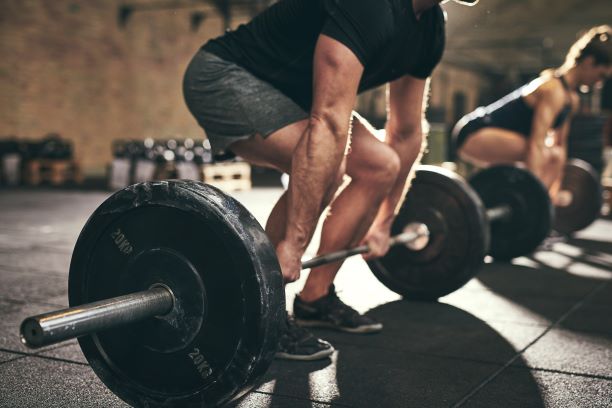The deadlift is essentially a hip hinge with weight. The hinge occurs by flexing your hips and maintaining a flat back. The deadlift also involves some knee flexion but the majority of the movement occurs by hinging at your hips. Hinging differs from stooping and squatting. Stooping involves bending the lower back more than the hips. Squatting involves bending at the knees more than the hips. When done properly, the deadlift is an exercise that resembles a safe technique for lifting.
Strengthening Your Backside
The deadlift is a great exercise to strengthen your backside. The gluteus maximus, one of the largest and strongest muscles of your body, is the prime mover when performing the deadlift. The quadriceps, hamstrings, and lower back muscles are also activated at high levels. Adequate strength in these large muscle groups is necessary for everyday function and performing sports at high levels. The deadlift also activates smaller stabilizing muscles of your spine to a greater extent than low-load exercises lying on the floor or a ball.
Don’t Fear the Deadlift
The deadlift sometimes gets a “bad rap”. This is because many in the medical community have cautioned people with low back pain from performing any heavy lifting. Improper execution of any exercise can indeed result in low back injury. However, when performed properly, the deadlift is an excellent exercise to strengthen your hips and lower back.
Proper instruction and coaching of the exercise should always occur for anyone with low back pain. Most people require the help of their physical therapist or coach to learn the exercise correctly.

Should People with Low Back Pain Deadlift?
The safe answer is it depends. However, research proves the deadlift can be very effective for strengthening your lower back muscles, decreasing your back pain, and improving your function. Therefore, most people with low back pain can, and should, be instructed on how to hip hinge and perform some variation of this exercise.
This does not mean everyone with low back pain should attempt to pick up as much weight as possible from the floor. There must be proper instruction, safe practice, and appropriate progression.

A 2015 study in the Journal of Orthopedic and Sports Physical Therapy showed both low-load exercises and deadlift training resulted in similar improvements in low back pain, back muscle strength, and disability. It was later found that people with better low back muscle endurance and lower pain levels were more likely to benefit from deadlift training. Therefore, a wise approach is, to begin with, low-load exercises on the floor or a table. Once pain levels decrease and muscle function improves, progressing to deadlift training can be started.
Exercise Progressions
It may be challenging for you to learn how to properly hinge at your hips without bending your back. Physical therapists use different corrective exercise approaches to teach the proper movement pattern. Only after mastering the movement pattern is weight added. The basics of the setup include a hip-width stance, soft slightly bent knees, your shoulder blades back, and your chest up. Your chest should be slightly above your hips, and your hips above your knees. The movement is initiated by extending the hips with a flat back.
Below are 5 exercise progressions for you. Many others are considered when designing an individualized program. The specific exercises prescribed depend on your strength, mobility, and goals.
The Deadlift and Back Pain: Closing Thoughts
You will never fully function in your everyday life without lifting objects from the floor. It is unreasonable to never lift anything from the floor. Physical therapists can teach you how to properly lift. Deadlift variations are ideal for this purpose. Research shows people with low back pain can safely and effectively perform the deadlift. For many people with low back pain, the conventional deadlift is not the best choice. Most people require modifications.
Your physical therapist can perform a physical examination and then prescribe the exercise that is best for you and your goals. Contact us if you need help getting started.


